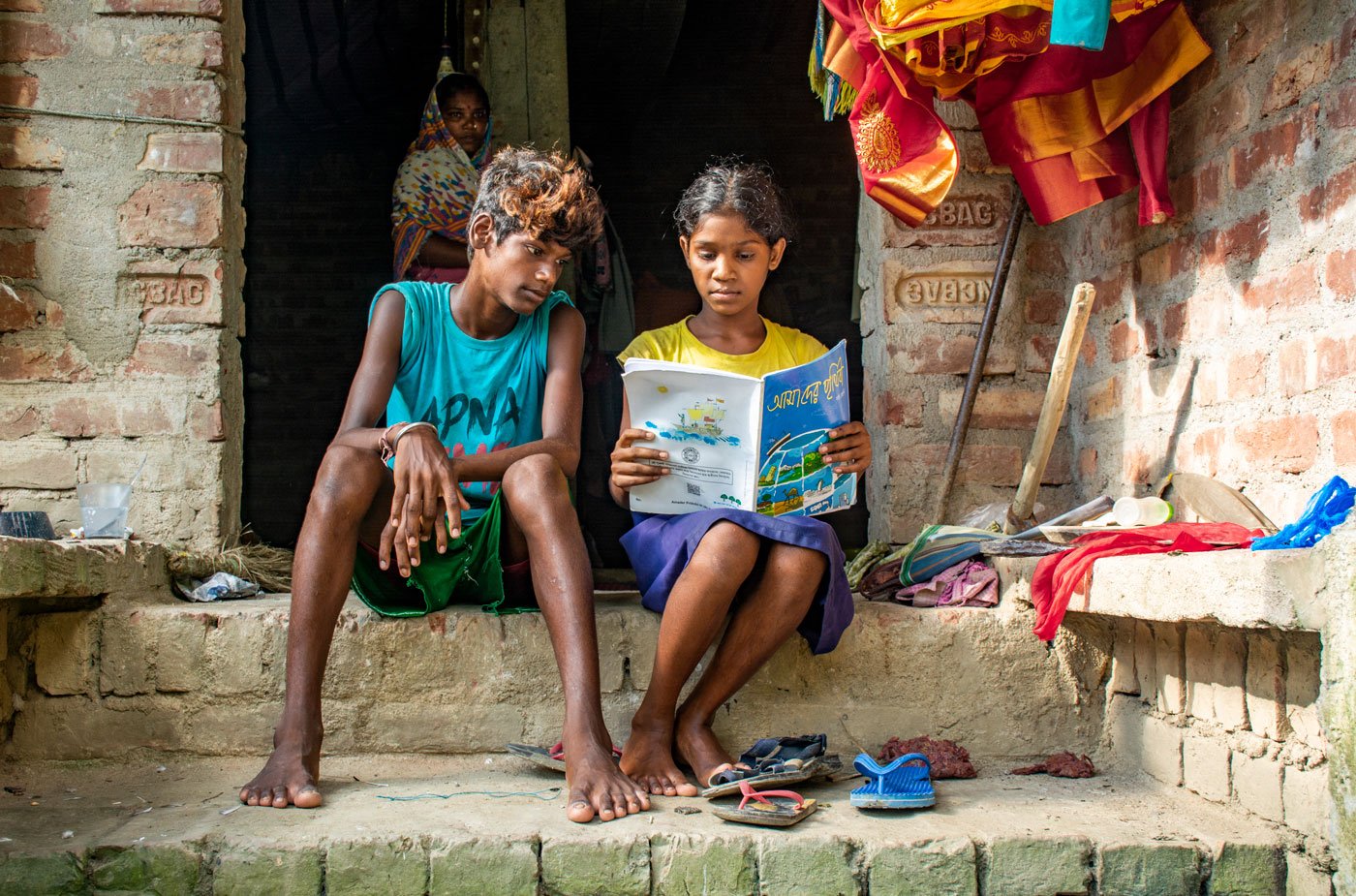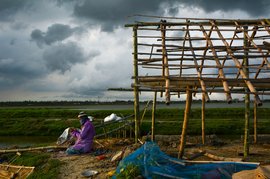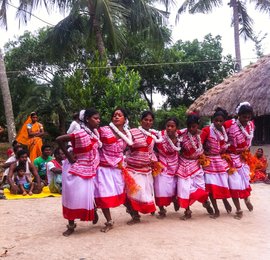Shasti Bhuniya dropped out of school last year. She then boarded a train to Bengaluru, nearly 2,000 kilometres from Sitarampur, her village in the Sundarbans region. “We are extremely poor. I could not have the mid-day meal at school,” she says. Shasti is 16 and was in Class 9, and in West Bengal and across India, students in government-run schools are given mid-day meals only till Class 8.
By March this year, Shasti made the return journey to her village in Kakdwip block of South 24 Parganas district. Her job in Bengaluru as a domestic worker had come to a halt when the lockdown began. With that, her income of Rs. 7,000 – some of which she would send home every month – also stopped.
Shasti’s father, 44-year-old Dhananjoy Bhuniya, works as a fisherman on Nayachar island, just off the coast of Sitarampur – as do many in the villages here. He catches fishes and crabs bare-handed and sometimes with small nets, sells these in nearby markets, and returns home every 10-15 days.
In their mud and thatch hut live Dhanonjoy’s mother Maharani, his daughters Janjali, 21, and Shasti, 18, and son Subrata, 14. His wife died a few months after Subrata was born. “We don’t get as many fish and crabs as before on the island, our income has reduced greatly [over the years],” says Dhananjoy, who now earns Rs. 2,000 to Rs. 3,000 every month. “We have to catch fishes and crabs to survive. What will we get by sending them to school?”
So just as Shasti dropped out, other students too are fast disappearing from the classrooms of the Sundarbans. The saline soil makes agriculture difficult, and widening rivers and recurring cyclones keep ravaging their homes in the delta. As a result, many from the villages in this region migrate to earn a living. Even children – often they are first generation learners – are pushed to migrate by the age of 13 or 14 to look for work. They don’t make it back to class.
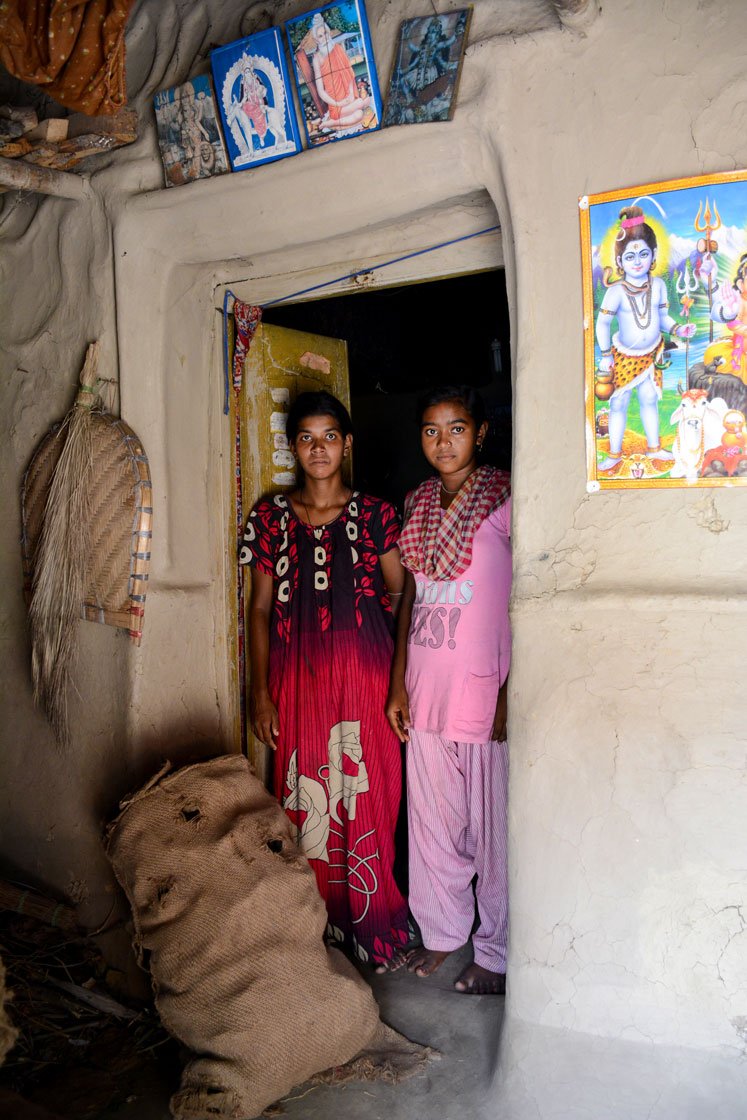
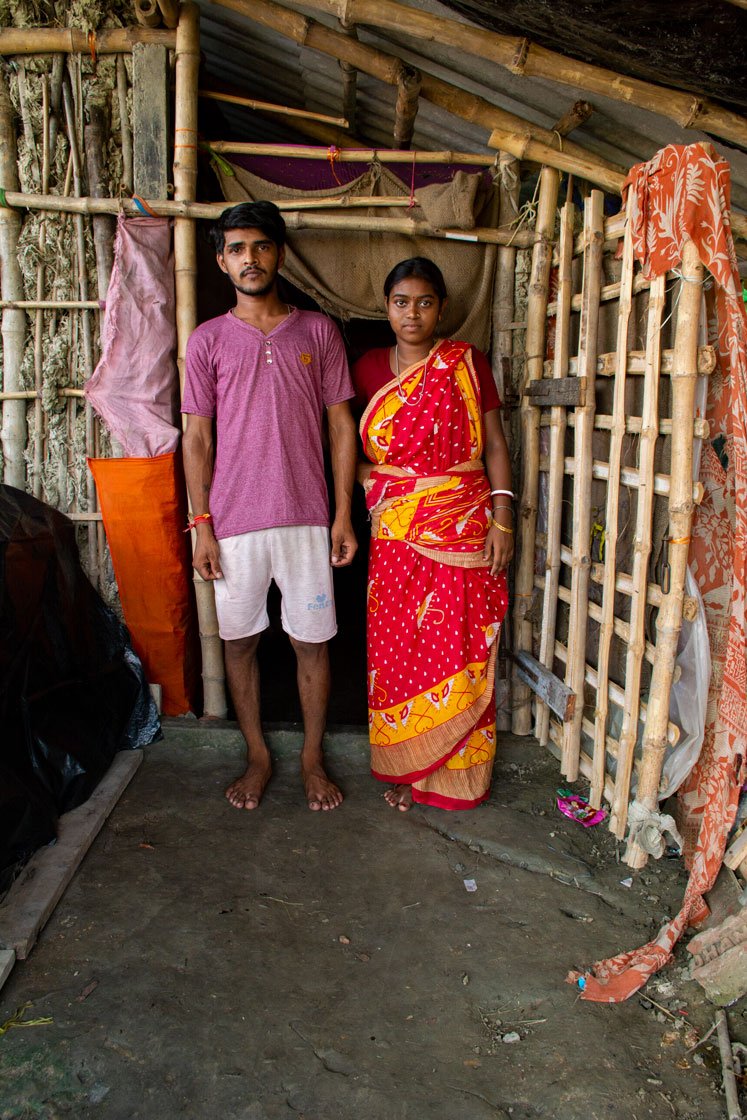
Janjali (left) and Shasti Bhuniya. Shasti dropped out of school and went to Bengaluru for a job as a domestic worker; when she returned during the lockdown, her father got her married to Tapas Naiya (right)
In South 24 Parganas district, 768,758 students are enrolled in 3,584 primary government-aided schools, and 432,268 study in 8o3 upper primary schools. The schools that many of them leave behind are severely under-staffed, with broken classrooms – which further fails to draw them back in.
“There is a sharp rise in drop-out rates [in the Sundarbans region] since 2009,” says Asok Bera, a primary school teacher in Sagar block’s Ghoramara island, which is especially vulnerable to floods and submersion. He is referring to the year Cyclone Aila hit the region, caused widespread havoc, and compelled further migrations. Since then, several storms and cyclones have added to the salinity of the land and ponds, forcing families to send more school-going teenagers out to work.
“Here the river snatches our land, houses and homes, and the storms [take] our students,” says Amio Mondal, a teacher at Amrita Nagar High School in Amtali village of Gosaba block, “We [teachers] feel helpless.”
These empty classrooms speak of a very different ground reality than what’s declared in laws and global goals. In 2015, India adopted the UN’s 17 Sustainable Development Goals for 2030; the fourth of these is to “Ensure inclusive and equitable quality education and promote lifelong learning opportunities for all.” The country’s Right of Children to Free and Compulsory Education Act, 2009, covers all children between 6 and 14 years. The National Curriculum Framework, 2005, emphasises the importance of inclusive classrooms, especially for students from marginalised sections and with disabilities. The central and state governments also offer several scholarships and incentive schemes to reduce the number of dropouts.
But the schools in the Sundarbans delta are still slowly losing students. As a teacher here, looking for lost faces in classrooms feels to me like standing in the middle of a sinking land.

Among those who have left school is Mostakin Jamader. 'I’ve put my son in a full-time job at a fishery to earn and support our family', his father says
“What will happen by studying? I’ll have to catch fishes and crabs in the river, just like my father,” my student Rabin Bhuniya had told me shortly after Cyclone Amphan hit Buraburir Tat, his village in Patharpratima block on May 20 this year. Rabin, 17, dropped out two years ago to help his father with fishing. Amphan wrecked his home and flooded his village with swathes of saline water. Pointing towards the waters of the Saptamukhi, he had said: “This river will make us all nomads.”
Among those who have left is 17-year-old Mostakin Jamader, who is from the same village as Shasti. “I get no joy from studies,” he says, about why he dropped out two years ago, when he was in Class 9. “What will come out of studying?” His father, Elias Jamader, adds, “I’ve put my son in a full-time job at a fishery to earn and support our family. Education will yield nothing. It didn’t help me either.” Elias, 49, dropped out after Class 6 to earn a living, and later migrated to Kerala to work as a mason.
Dropping out from schools especially impacts girls – more and more of them either stay back at home or are married off. “When I had asked Rakhi Hazra [a Class 7 student] why she had been absent for the past 16 days, she began to cry,” Dilip Bairagi, the headmaster of Shibkalinagar village’s I. M. High School in Kakdwip block, had told me in 2019. “She said that she has to look after her brother [who was in Class 3] when her parents both left the house to catch crabs in the river Hooghly.”
The lockdown has added to these withdrawals. Amal Sheet, a fisherman in Buraburir Tat village, asked his 16-year-old daughter Kumkum, who was in Class 9, to leave school when the family arranged her marriage to ease their financial strain. “The river doesn’t yield fish like it used to,” says Amal, the sole earner in his six-member family. “That’s why I got her married during the lockdown, while she’s still studying.”
A 2019 UNICEF report notes that 22 million of the 223 million child brides (those married before the age of 18) in India live in West Bengal.
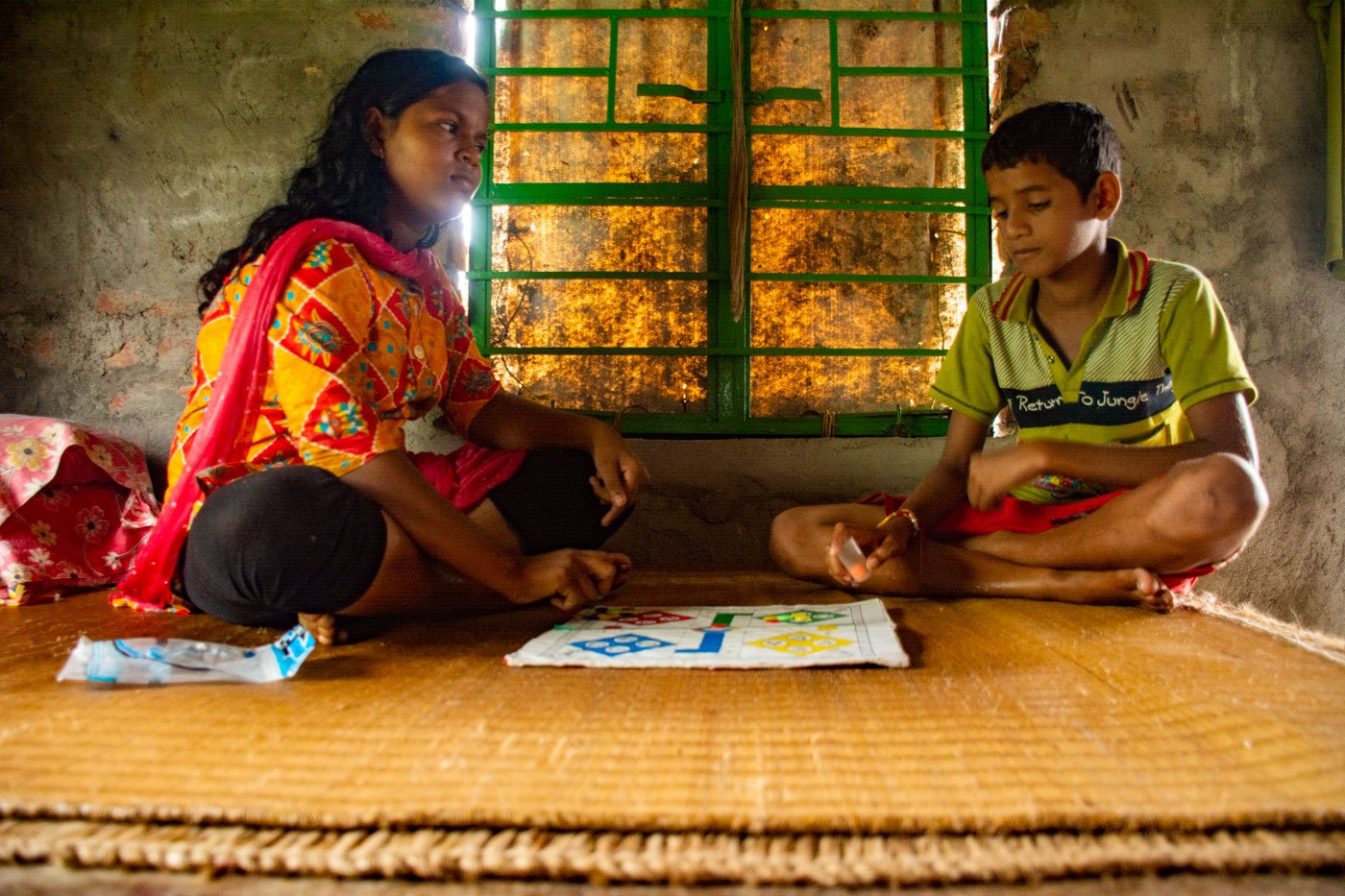
Kumkum (left) studies in Class 9, while Sujan Sheet is in Class 6 in Buraburir Tat village. 'The river doesn’t yield fish like it used to', says their father. 'That’s why I got her [Kumkum] married during the lockdown'
“Despite incentives [to continue education] from the Bengal government, a large number of child marriages occur here [in the Sundarbans region]. Most parents and guardians think that educating a girl child does not benefit the household, and that feeding one less person will save some money,” says Biman Maity, headmaster of Shibnagar Mokshada Sundari Vidyamandir in Patharpratima block.
“Due to the Covid-19 lockdown, schools have been closed for long and no studies are going on,” continues Maity. “Students are being lost from the realm of education. They will not return after this loss. They will vanish, never to be found.”
When Shasti Bhuniya returned from Bengaluru in mid-June, she too was pushed to marry. Tapas Naiya, 21, had attended the same school as her and dropped out in Class 8, when he was 17. He was not interested in studies and wanted to support his family, so he found work as a mason in Kerala. He returned to the village in May due to the lockdown. “He is now working at a poultry shop at Sibkalinagar,” Shasti says.
Her older sister – 21-year-old Janjali Bhuniya, who cannot hear or see – also stopped studying by Class 8, when she was 18. A year later, she was married to Utpal Mondal – now 27 – who dropped out of school in Nutan Tyangrachar, his village in Kulpi block, when he was in Class 8. Mondal contracted poliomyelitis as a child and has had trouble walking ever since. “I couldn’t go to school on my own hands and feet, and we didn’t have the money for a wheelchair,” he says. “I couldn’t study, even though I wanted to.”
“My two granddaughters could not study,” remarks Shasti and Janjali’s 88-year-old grandmother Maharani, who raised them. Now, with schools shut down due to the Covid-19 lockdown, she says, “I don’t know whether my grandson [Subrata] will be able to either.”
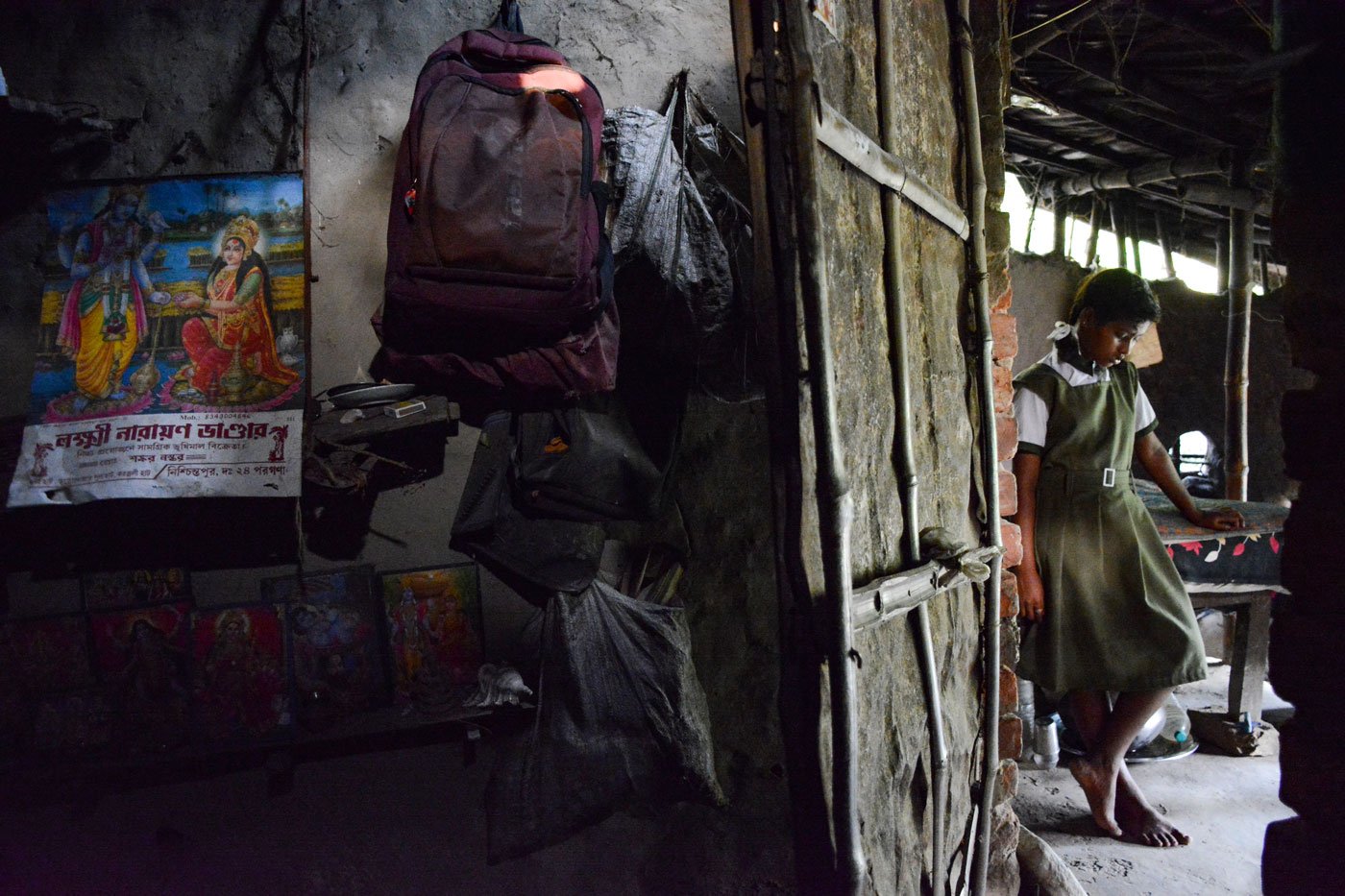
Swantana Pahar, 14, is in Class 8 in Bazarberia Thakurchak Shiksha Sadan High School in Sitarampur village, Kakdwip block. A 2019 UNICEF report notes that 22 million of the 223 million child brides (those married before the age of 18) in India live in West Bengal

Bapi Mondal, 11, is a Class 5 student in Baliara Kishore High School, Namkhana block. He and his family stayed at a relief centre for over a month after Cyclone Amphan hit on May 20, then rebuilt their house using mud, bamboo poles and tarpaulin. A growing incidence of storms and cyclones have added to the salinity of the land and ponds, forcing families to send more school-going teenagers out to work
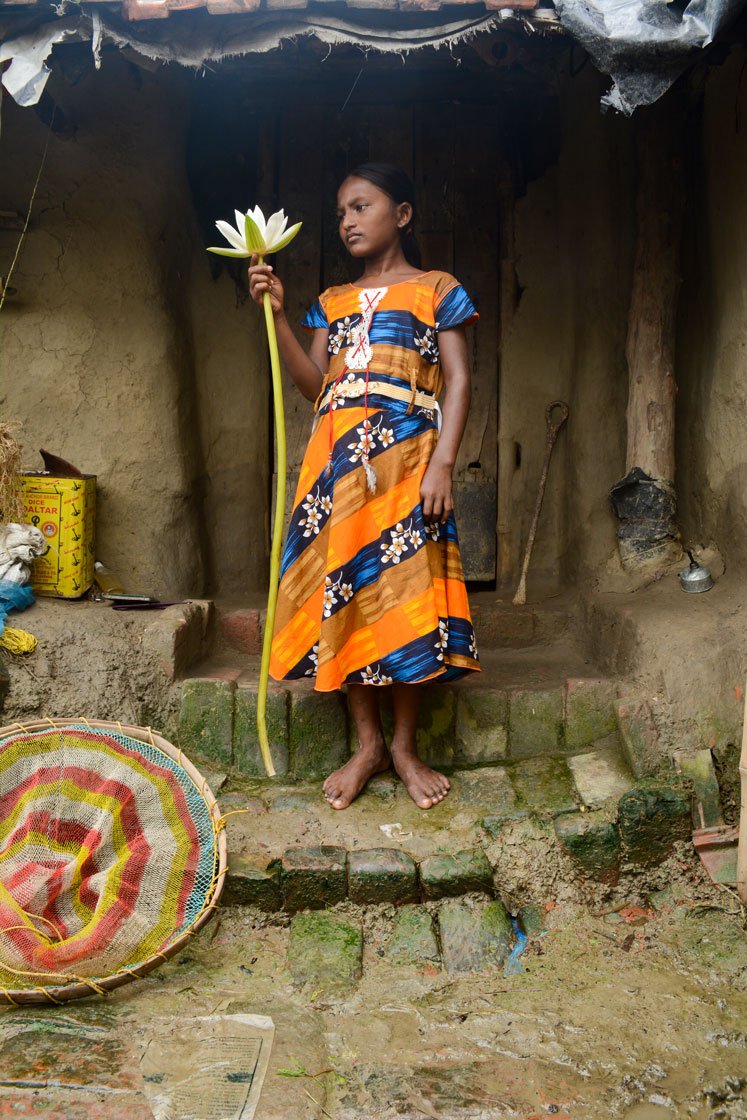
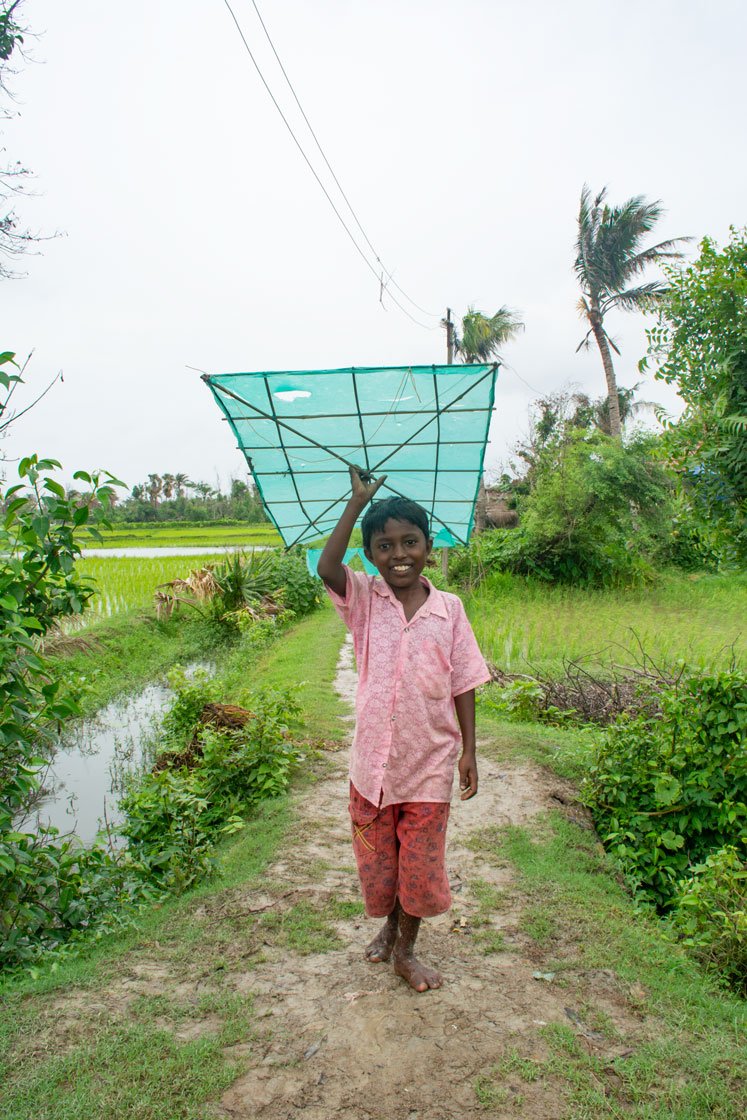
Sujata Jana, 9, is a Class 3 student (left) and Raju Maity, 8, is in Class 2 (right); both live in Buraburir Tat village, Patharpratima block. Their fathers are fishermen, but the catch is depleting over the years and education is taking a hit as older children drop out of school to seek work
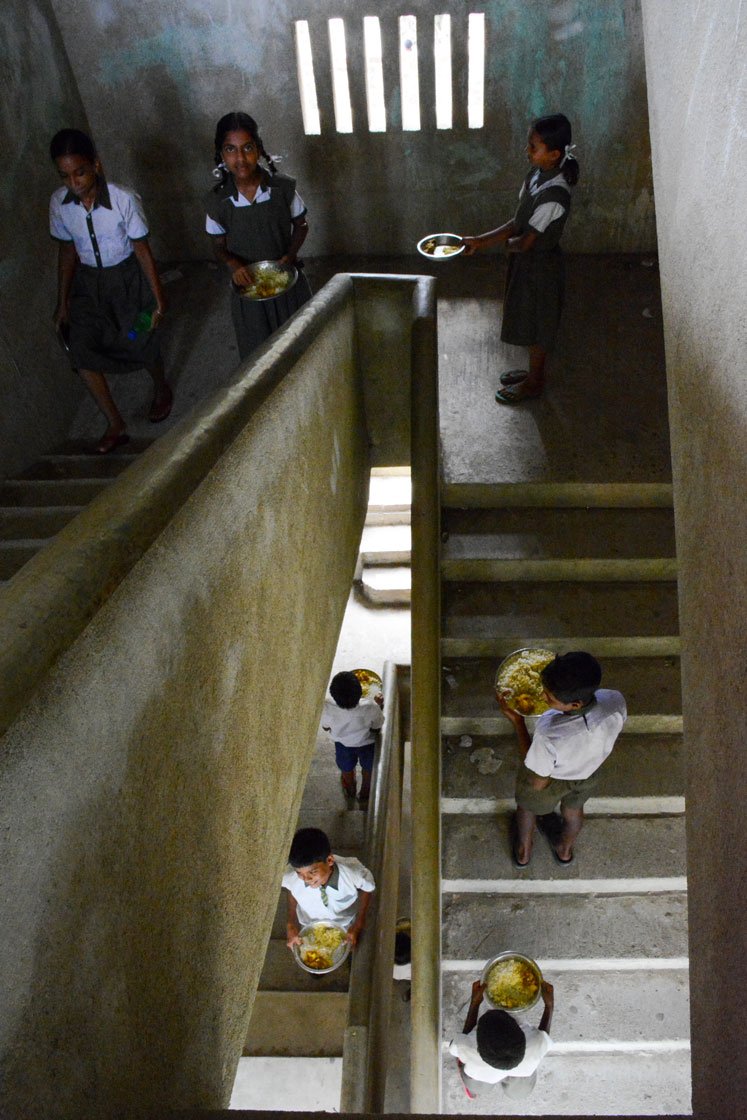

Left: Students with their mid-day meal at Shibnagar Mokshada Sundari Vidyamandir in Patharpratima block. Right: Ghoramara Milan Vidyapith High School, Ghoramara island. In West Bengal and across India, students in government-run schools are given mid-day meals only till Class 8; many drop out after that
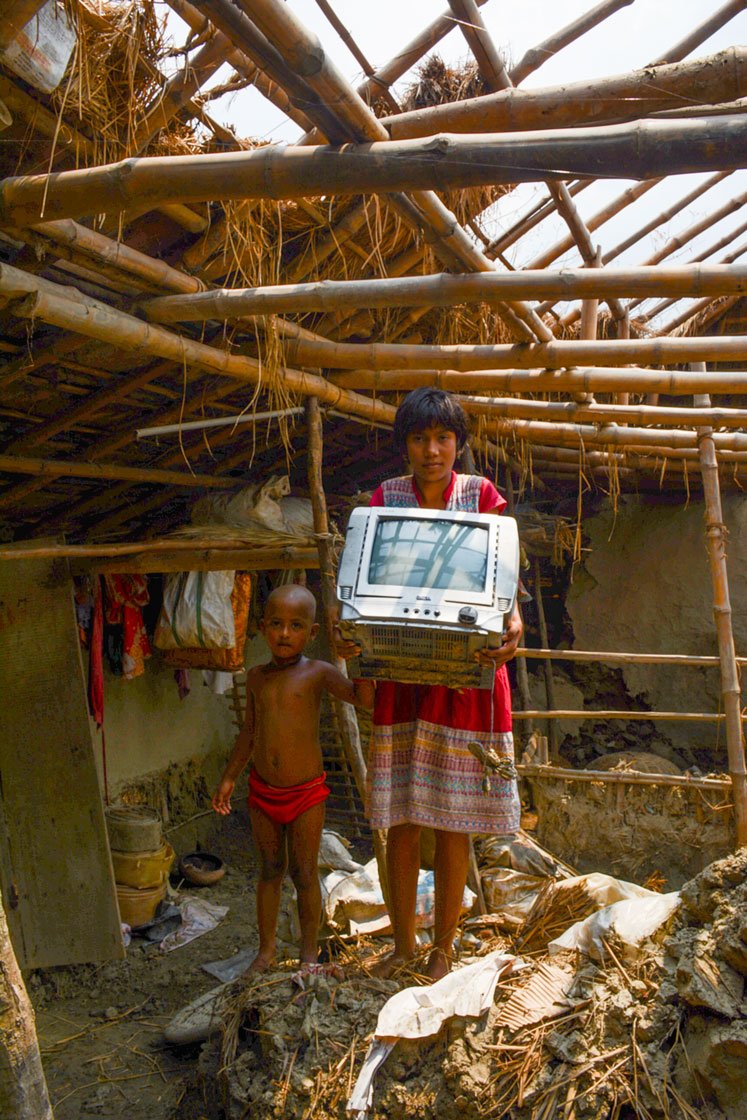
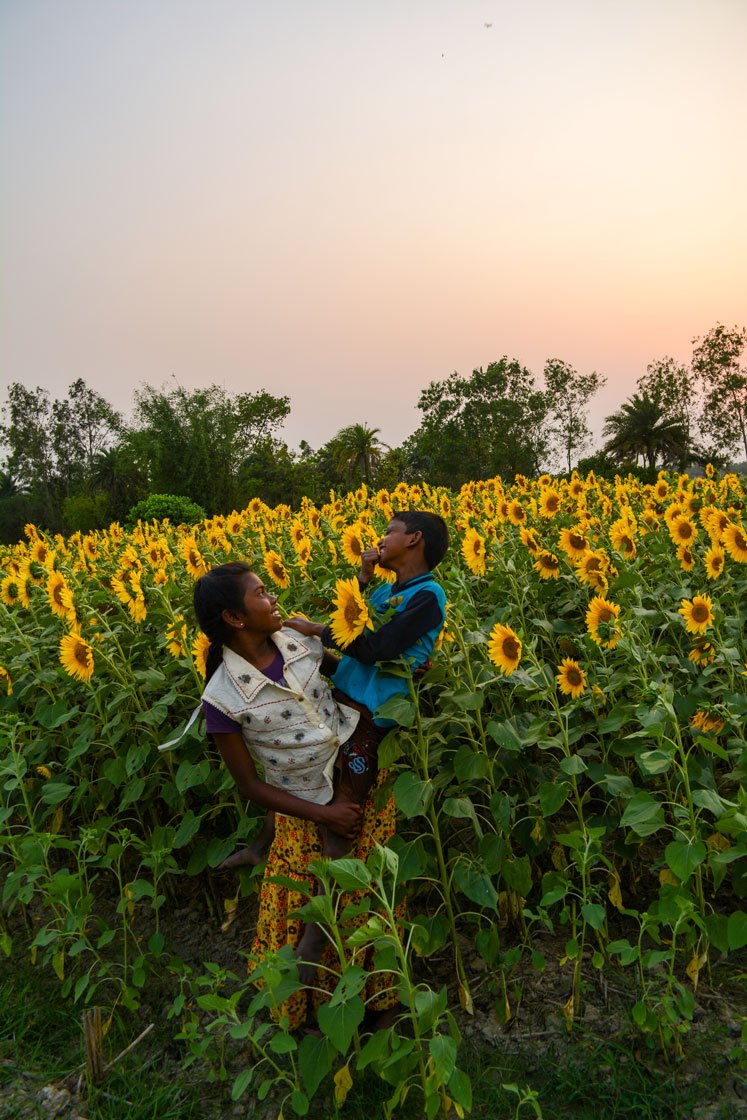
Left: Debika Bera, a Class 7 schoolgirl, in what remains of her house in Patharpratima block’s Chhoto Banashyam Nagar village, which Cyclone Amphan swept away. The wrecked television set was her family’s only electronic device; she and her five-year-old sister Purobi have no means of 'e-learning' during the lockdown. Right: Suparna Hazra, 14, a Class 8 student in Amrita Nagar High School in Amtali village, Gosaba block and her brother Raju, a Class 3 student
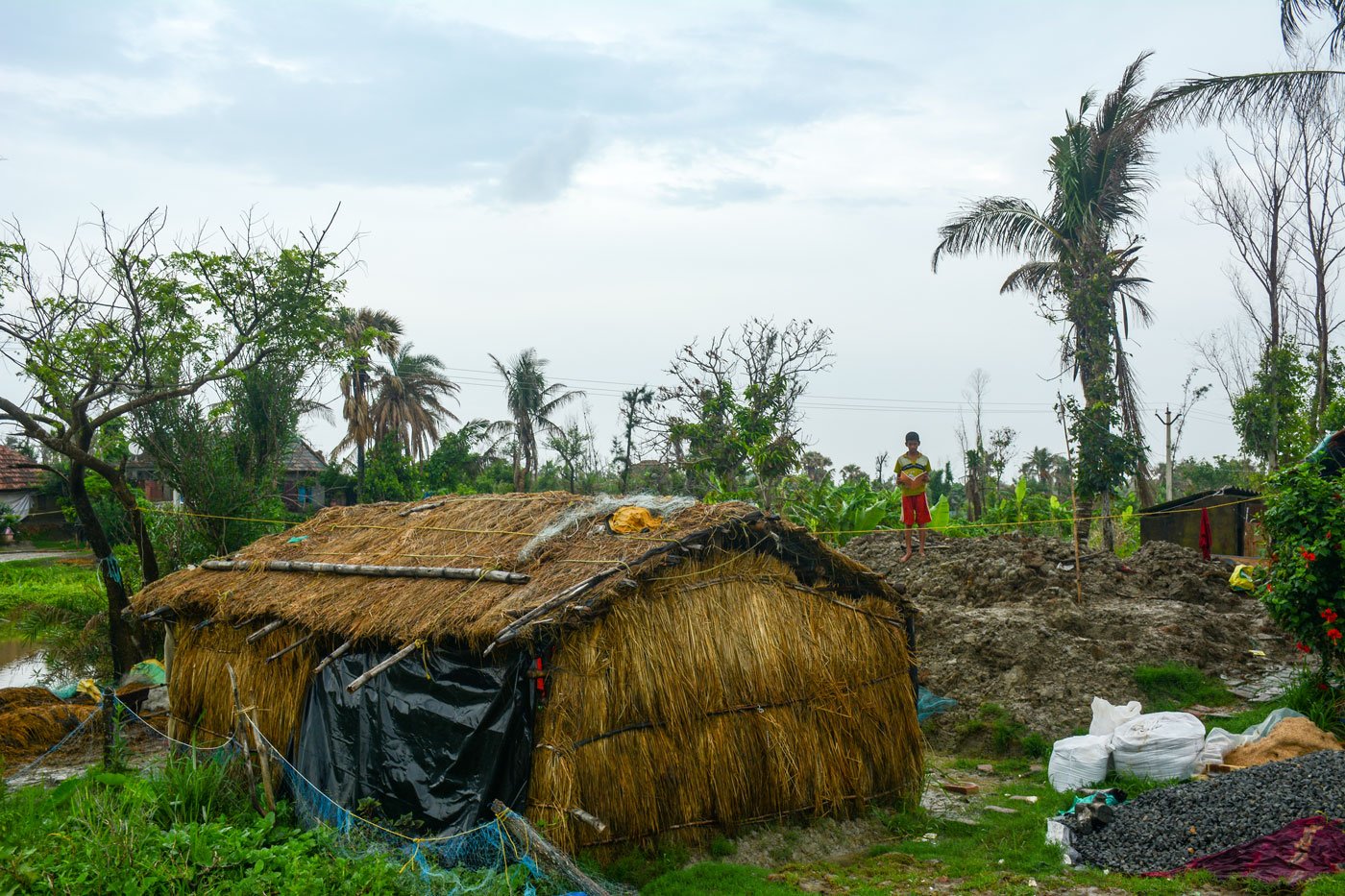
Krishnendu Bera, a Class 8 student of Buraburir Tat Junior High School, in front of his destroyed home after Cyclone Amphan. He lost all his books, stationery and belongings. When this picture was taken, he was helping his father Swapan Bera build a mud house with a straw-and-thatch roof. Schooling took a backseat

Rumi Mondal, 11, is a student of Class 6 in Amrita Nagar High School in Gosaba block. This picture was taken shortly after Amphan, as she helped her mother obtain relief from NGOs and other organisations. 'Here the river snatches our land, houses and homes, and the storms [take] our students,' says a teacher
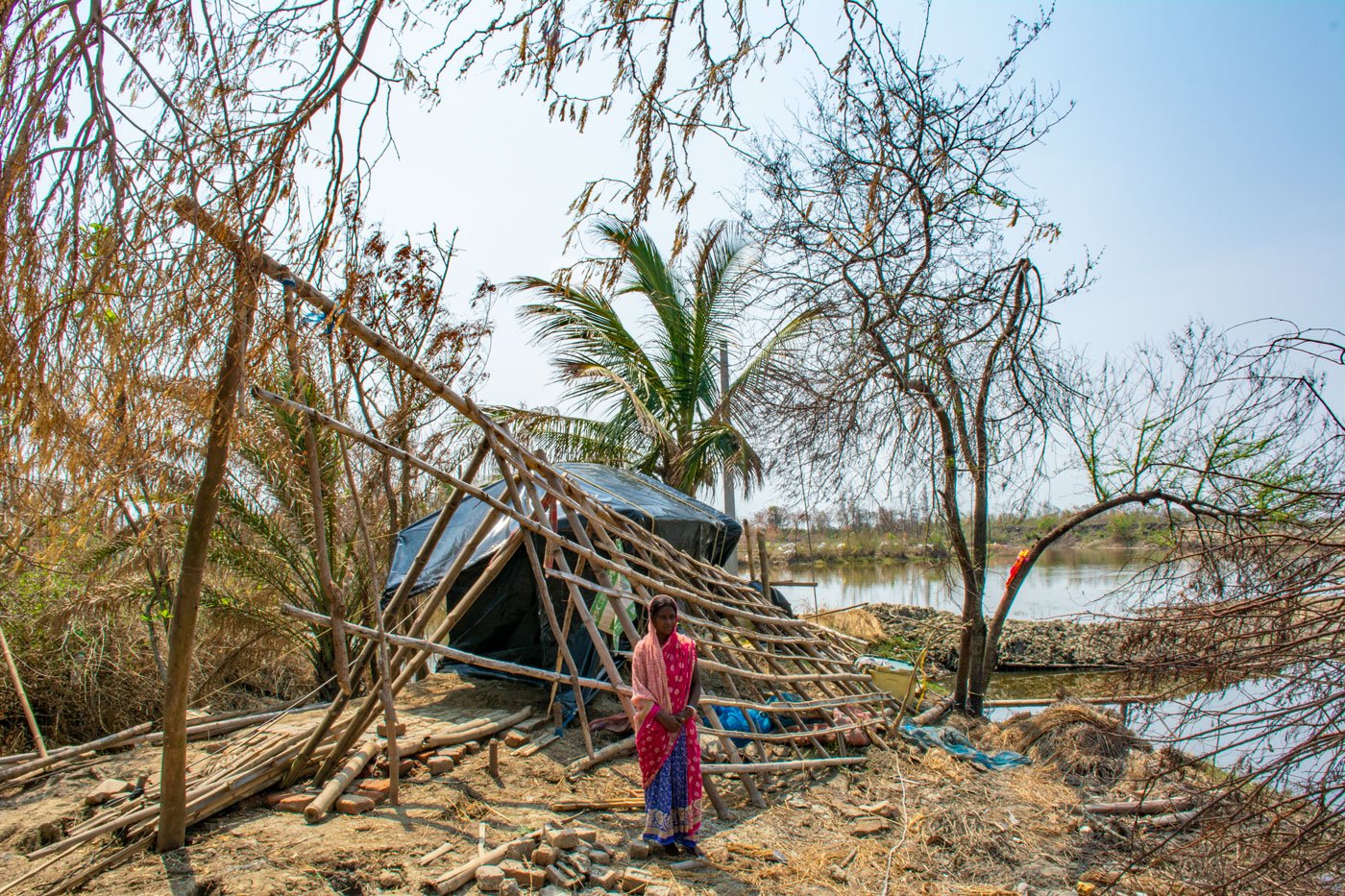
Rebati Mondal in front of her home in Puinjali village, Gosaba block, after Cyclone Amphan. Having lost their home and belongings, her children – Pranoy Mondal (16, Class 10) and Puja Mondal (11, cCass six) – will find it hard to resume their education
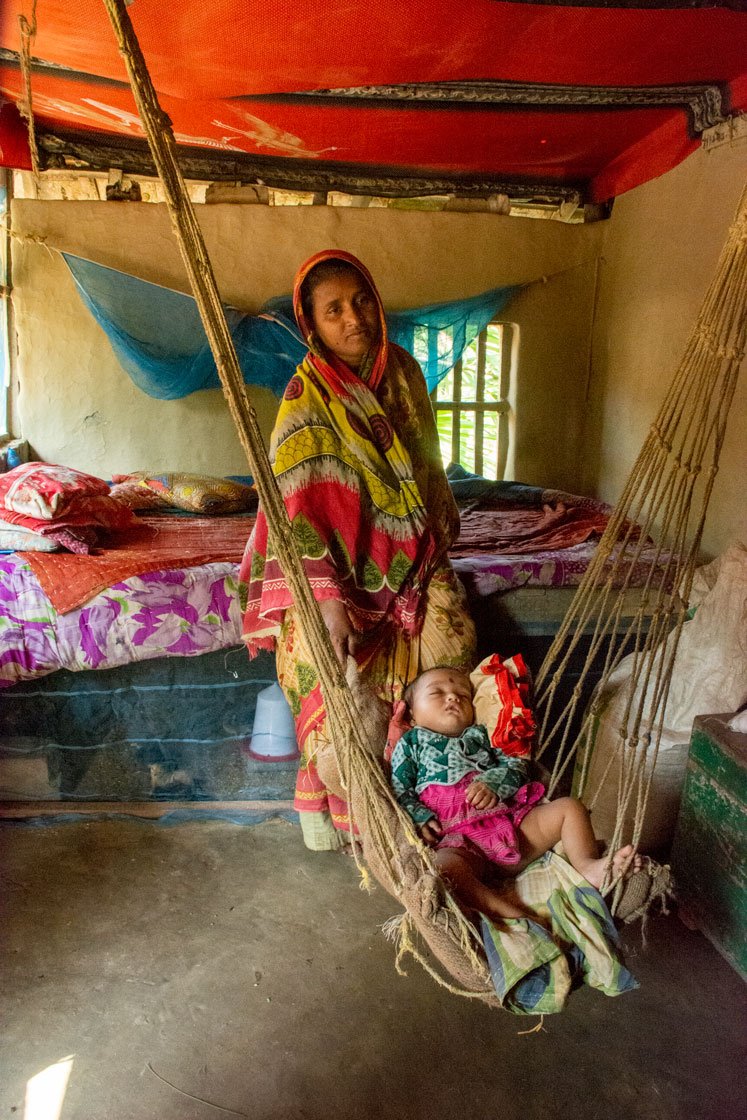
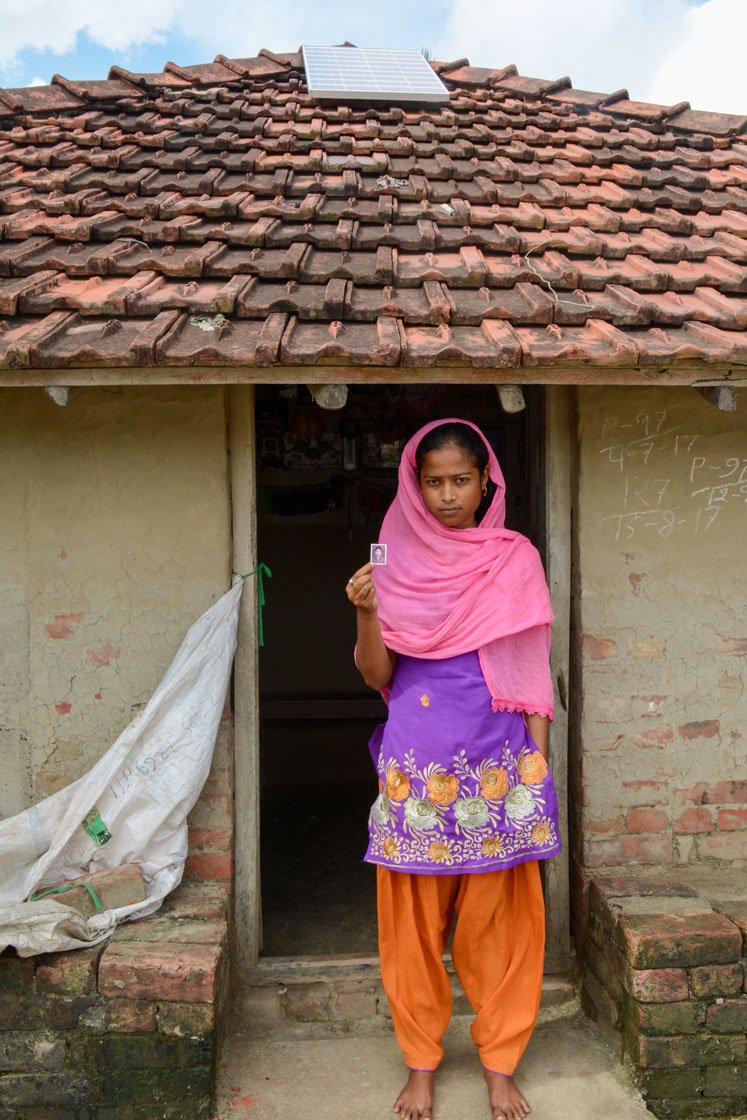
Left: Anjuman Bibi of Ghoramara island cradles her nine-month-old son Aynur Molla. Her elder son Mofizur Rahman dropped out of school in Class 8 to support the family. Right: Asmina Khatun, 18, has made it to Class 12 in Baliara village in Mousuni Island, Namkhana block. Her brother, 20-year-old Yesmin Shah, dropped out of school in Class 9 and migrated to Kerala to work as a mason
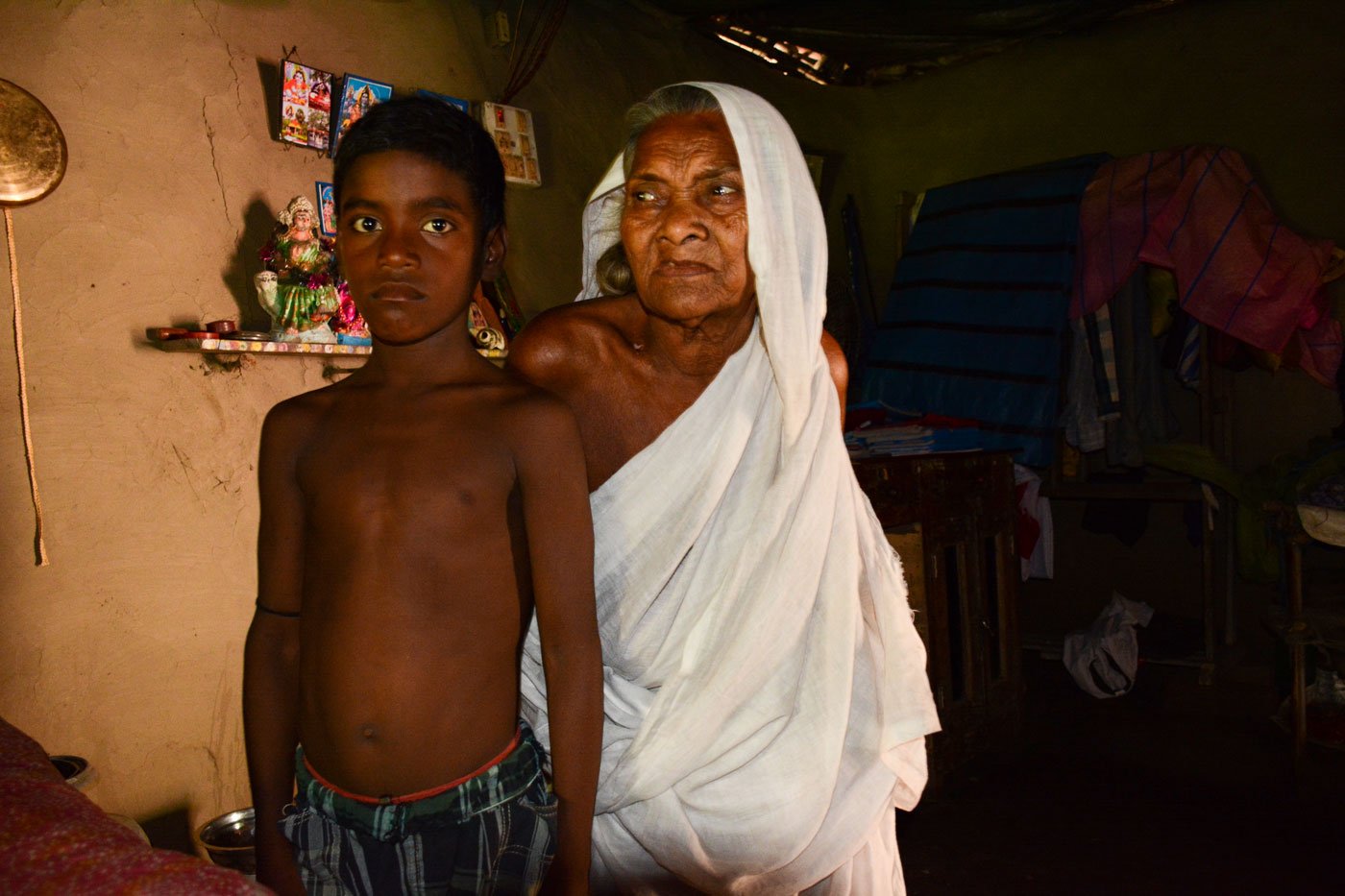
'My two granddaughters could not study', remarks Shasti and Janjali’s 88-year-old grandmother Maharani. Now, with schools shut down due to the Covid-19 lockdown, she says, 'I don’t know whether my grandson [Subrata] will be able to either'
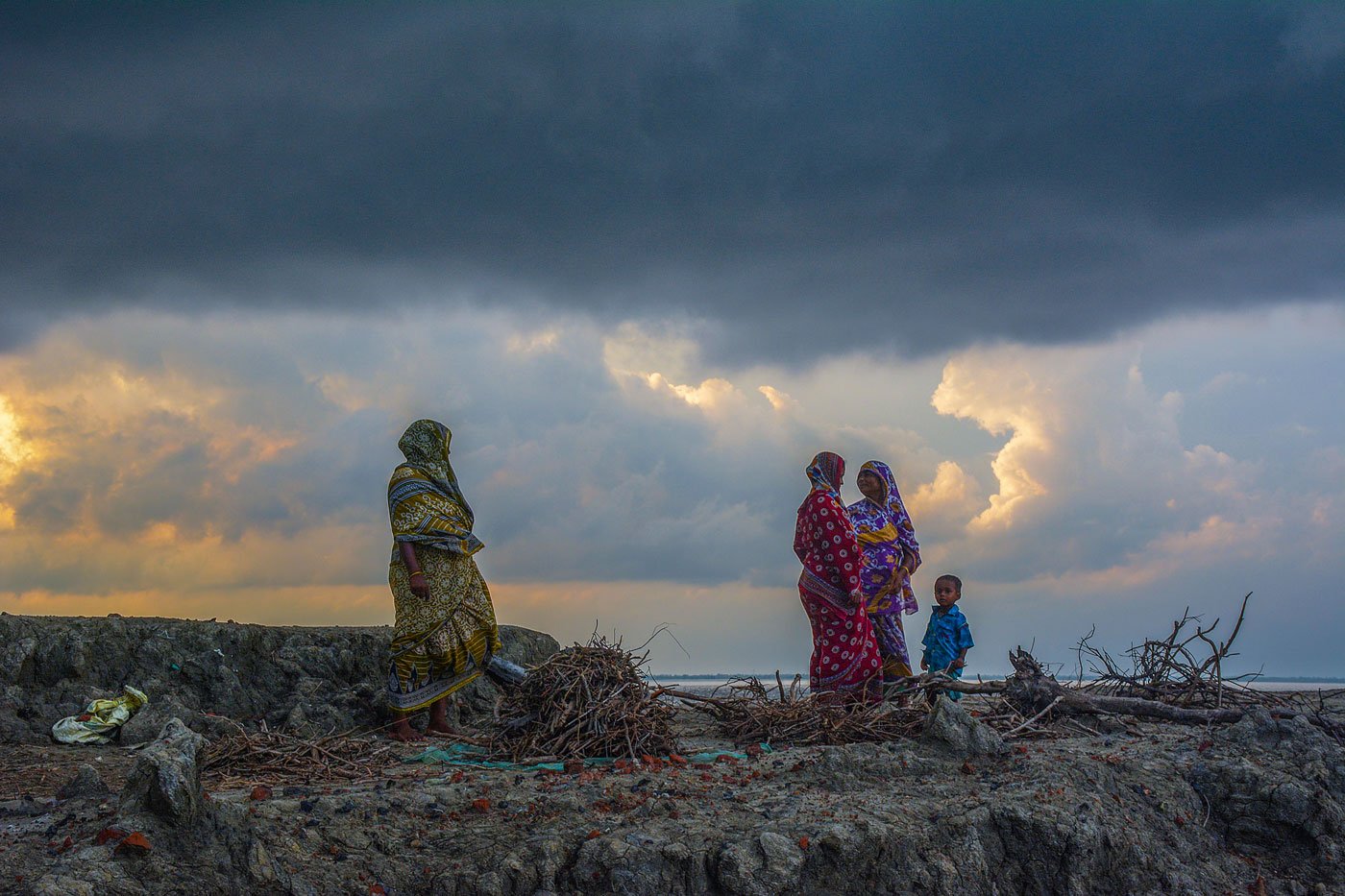
Women in Sibnagar village, Patharpratima block South 24 Parganas, who are mostly engaged in domestic activities in catcing fishes and crabs with their husbands. In many of their families, the sons sons have migrated to Kerala and Tamil Nadu to work as masons or construction labourers
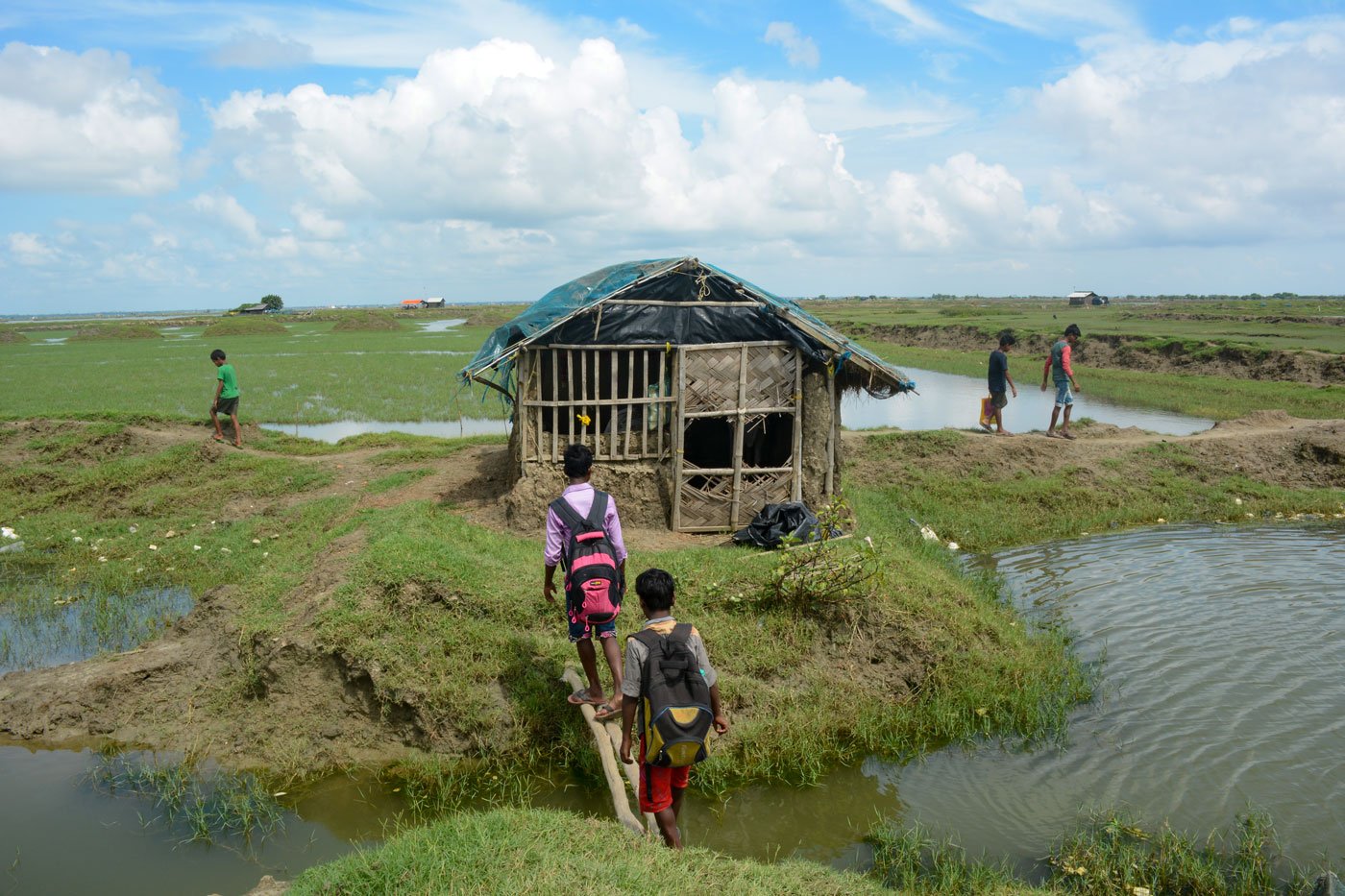
Students retuning to their makeshift hut on Nayachar island, where their parents catch fishes and crabs for a living
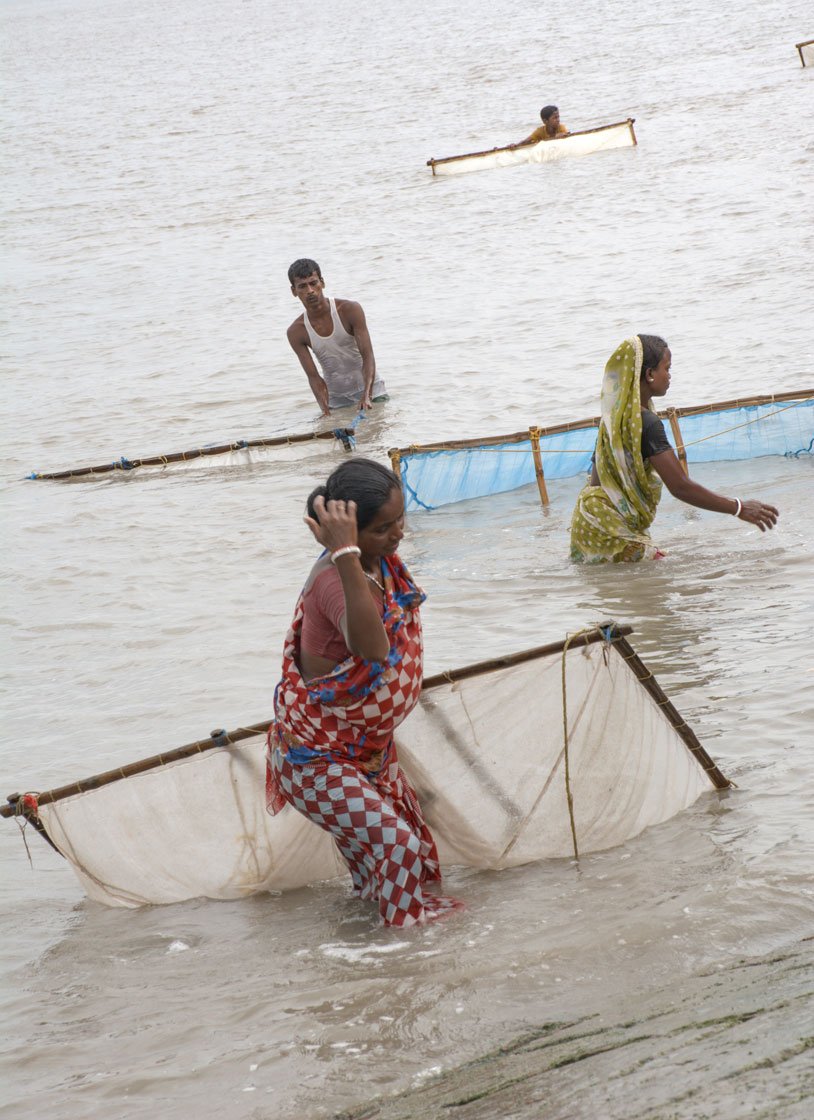
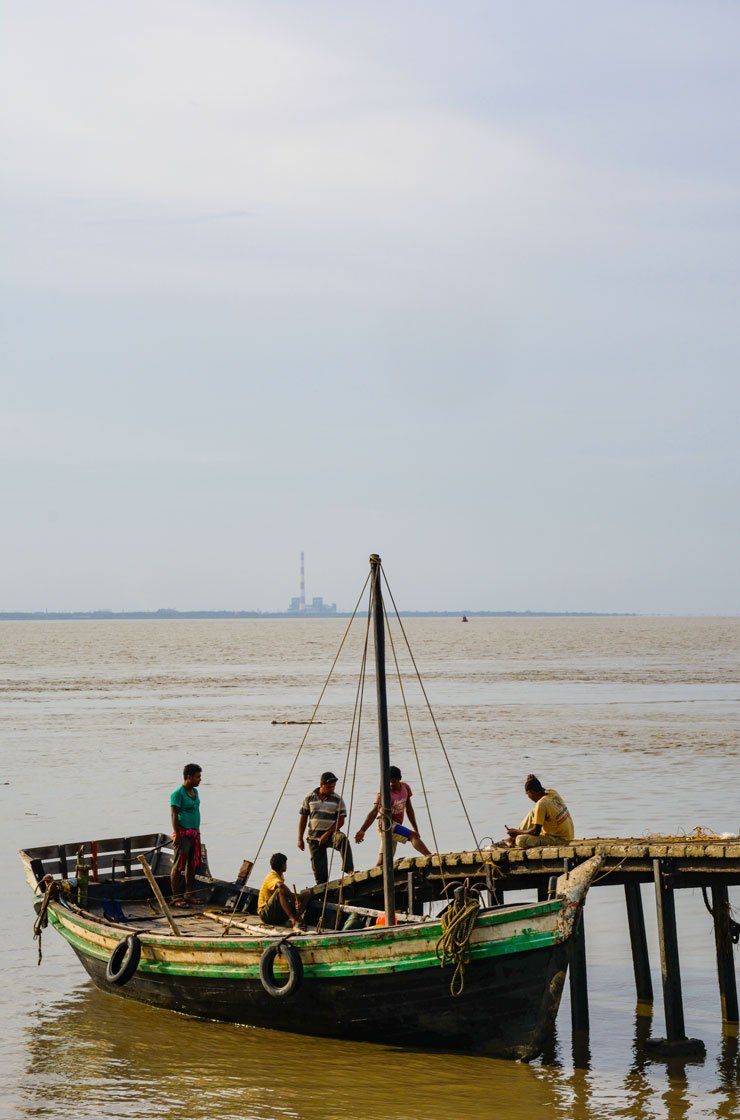
Left: Trying to make a living by catching fish in Bidya river in Amtali village. Right: Dhananjoy Bhuniya returning home to Sitarampur from Nayachar island
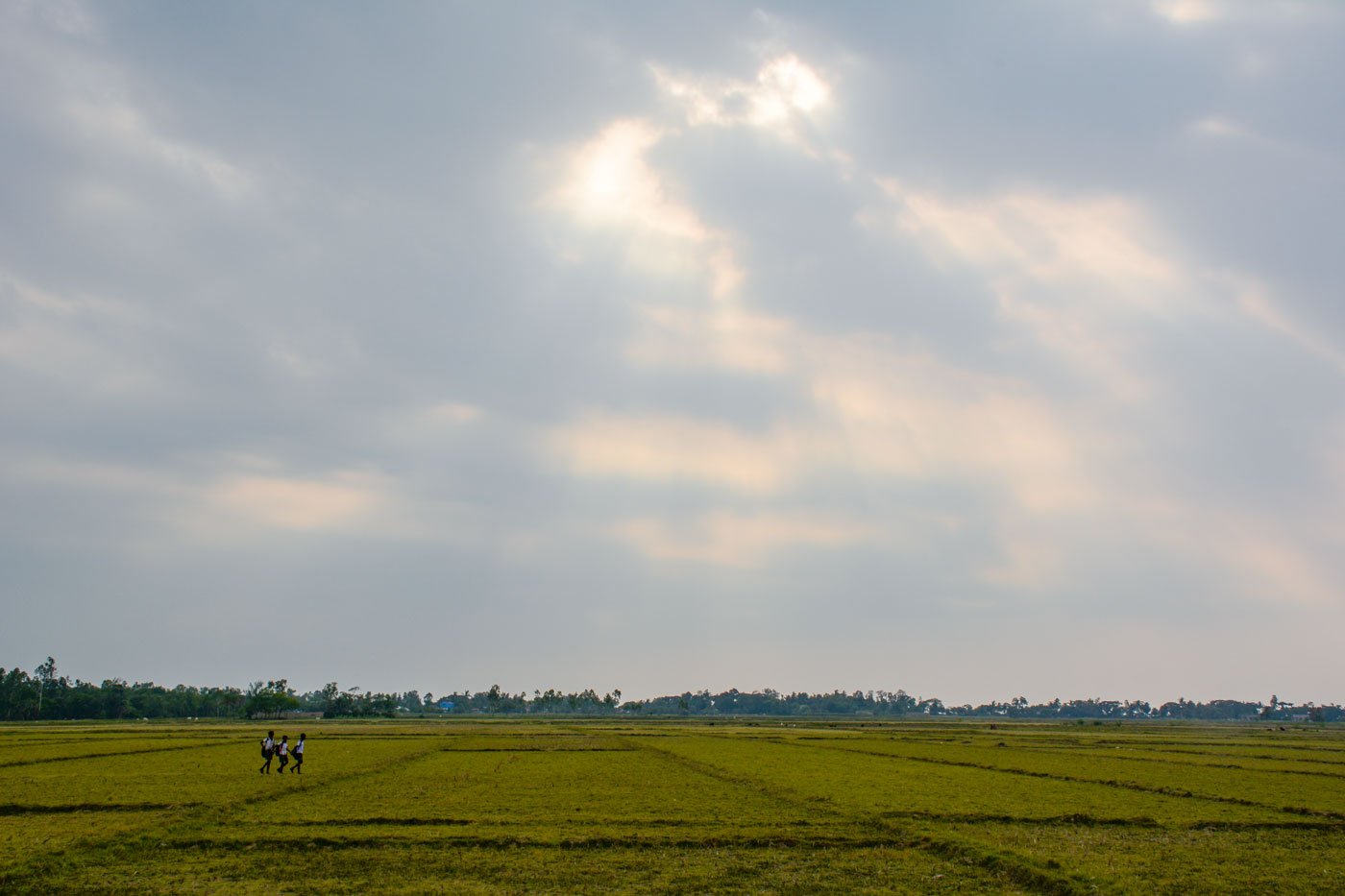
Students returning home from Sitarampur High School, before the lockdown began and further hit their already precarious chances of an education
Cover photo on top: Robin Roy, 14, dropped out of school in 2018 and began working as a waiter in a restaurant in Kolkata. He returned home to Nutan Tyangrachar village due to the lockdown. His sister, 12-year-old Priya, is a class six student in Harinkhola Dhruba Adiswar High School in Kulpi block.
